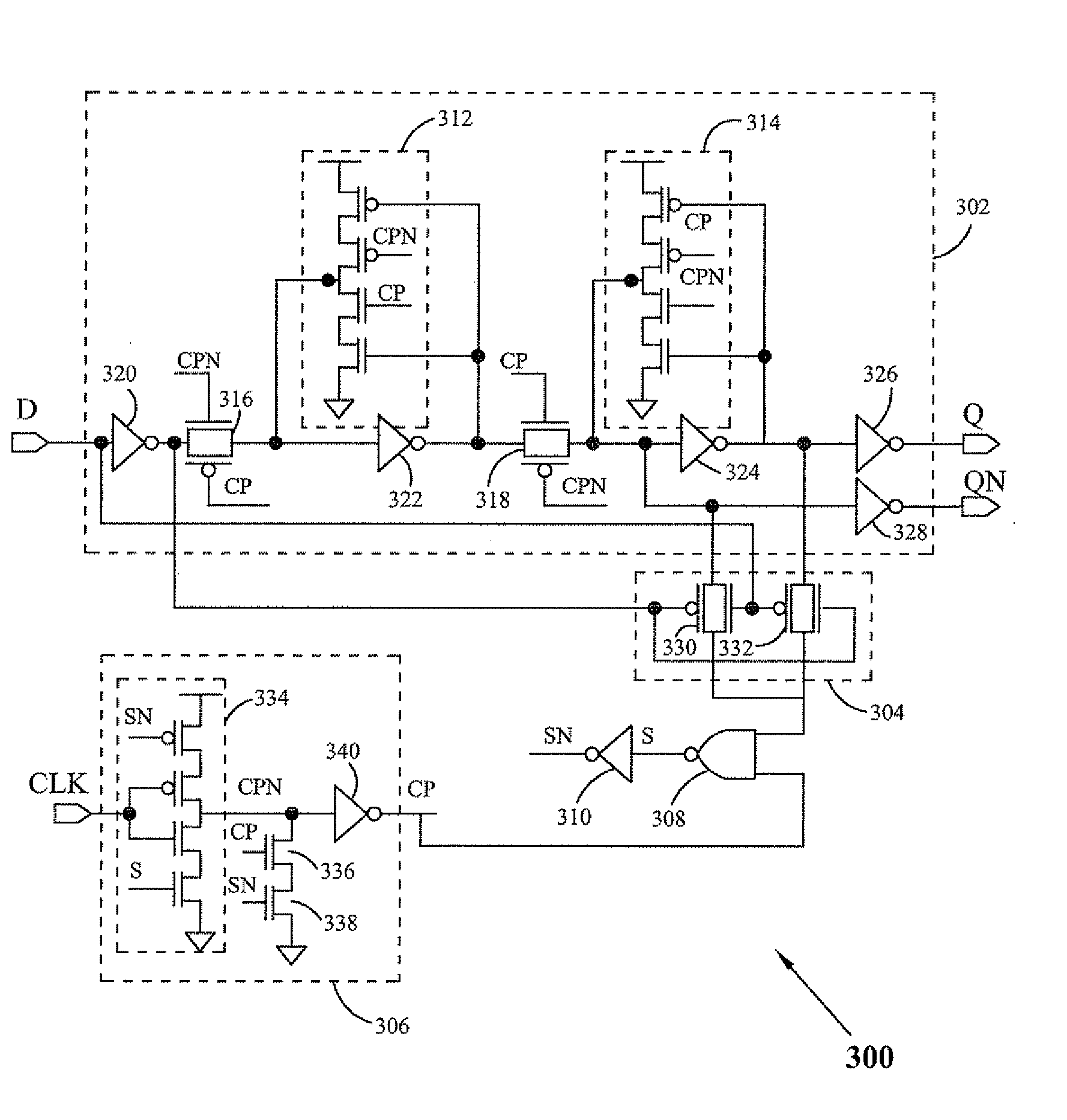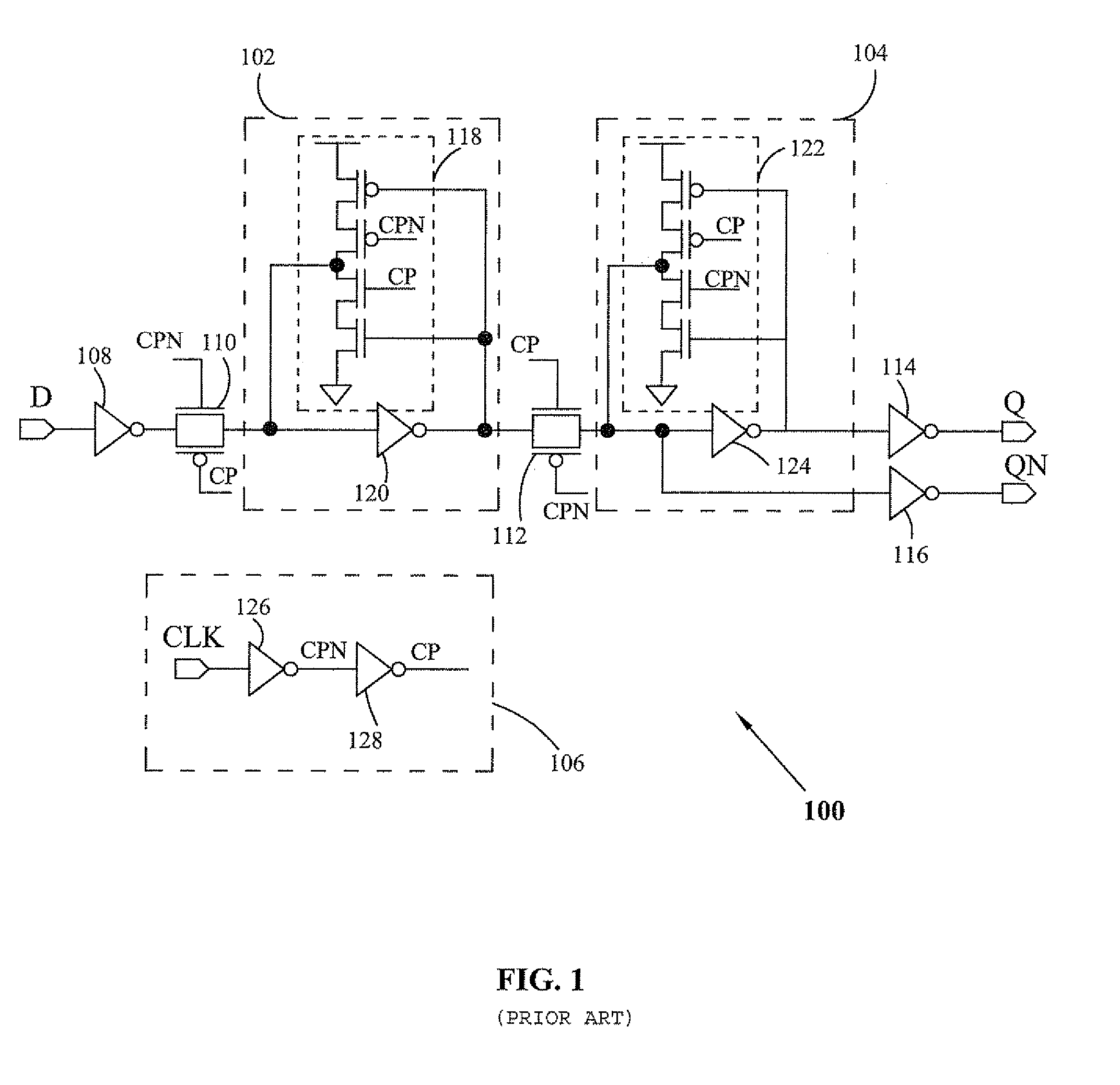Low power flip-flop circuit
a flip-flop circuit and low power technology, applied in the field of sequential digital circuits, can solve the problems of high switching current during dynamic transition, high power dissipation, imperfect rise at the node cp, etc., to prevent false edge generation, prevent power dissipation in the flip-flop circuit, and reduce the effect of switching curren
- Summary
- Abstract
- Description
- Claims
- Application Information
AI Technical Summary
Benefits of technology
Problems solved by technology
Method used
Image
Examples
Embodiment Construction
[0028]The preferred embodiments of the present invention will be described in detail with reference to the accompanying drawings. However, the present invention is not limited to the preferred embodiments. The present invention can be modified in various forms. The preferred embodiments of the present invention are only provided to explain more clearly the present invention to one of ordinary skill in the art of the present invention. In the accompanying drawings, like reference numerals are used to indicate like components.
[0029]FIG. 3 illustrates a flip-flop circuit 300 according to an embodiment of the present invention. The flip-flop 300 utilizes low power and thus can be used for low electromagnetic interference (EMI) applications. The circuit 300 includes a flip-flop circuit 302, a sensing circuit 304, a clock generating circuit 306, a NAND gate 308 and an inverter 310. The flip-flop circuit 302 includes two tri-state inverters 312 and 314, two transmission gates 316 and 318 a...
PUM
 Login to View More
Login to View More Abstract
Description
Claims
Application Information
 Login to View More
Login to View More - R&D
- Intellectual Property
- Life Sciences
- Materials
- Tech Scout
- Unparalleled Data Quality
- Higher Quality Content
- 60% Fewer Hallucinations
Browse by: Latest US Patents, China's latest patents, Technical Efficacy Thesaurus, Application Domain, Technology Topic, Popular Technical Reports.
© 2025 PatSnap. All rights reserved.Legal|Privacy policy|Modern Slavery Act Transparency Statement|Sitemap|About US| Contact US: help@patsnap.com



